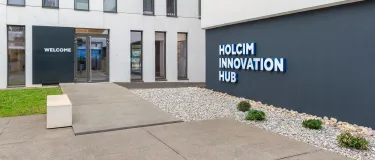HOLCIM INNOVATION HUB TOUR
1. Introduction
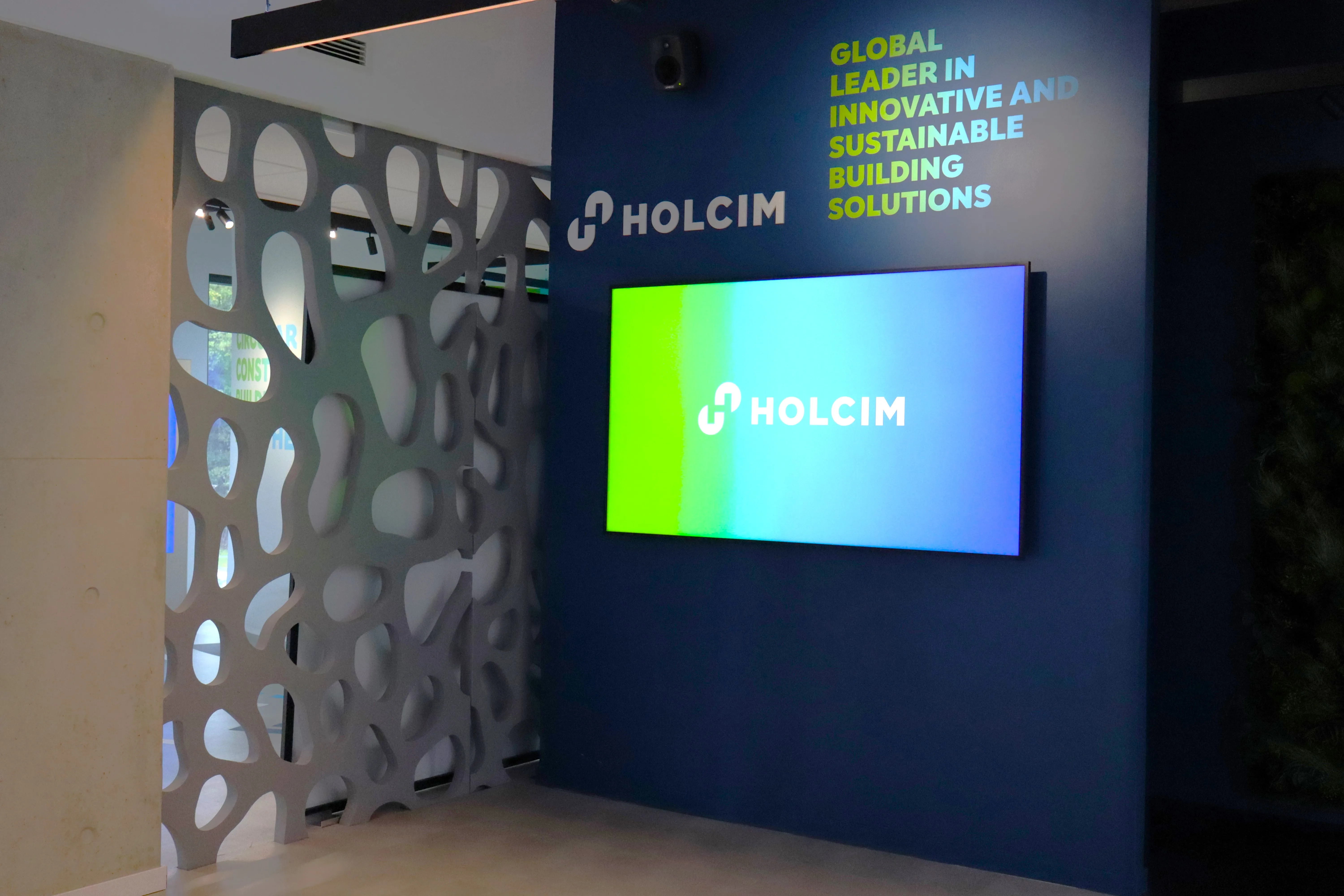
Press play for audio:
Transcript: Welcome to the Holcim Innovation Hub! Opened in 2023, this space serves as a co-creation lab to accelerate low-carbon and circular building, by bringing together the major actors across the construction value chain.
Since then, the Hub has welcomed over 3000 visitors from around the world, from architects and real estate developers to public authorities and university professors. And today, we’re excited to welcome you!
The space you’re about to explore is our innovation showroom, presenting Holcim’s range of sustainable building solutions.
2. Decarbonization strategy
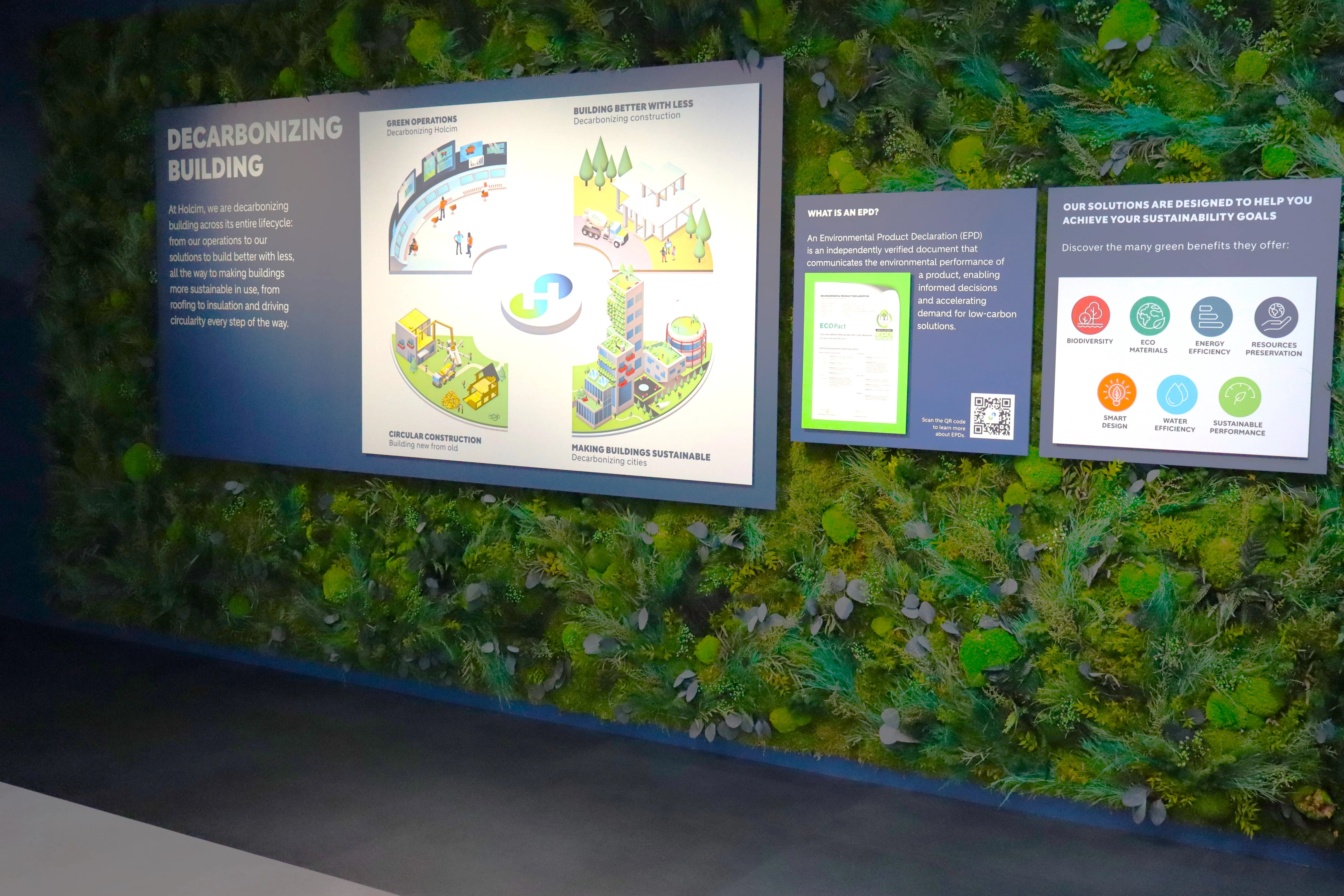
Press play for audio:
Transcript: The built environment represents 38% of the world’s CO2 emissions - and that is why Holcim is on a mission to decarbonize building across its entire life cycle.
Our decarbonization strategy is based on four pillars.
Firstly, green operations: we are decarbonizing our own operations to become a net-zero company. This ranges from switching to alternative energy sources to deploying carbon capture, utilization and storage technologies. Then, we can decarbonize our products - like the ones you’ll see in the showroom today.
We empower our customers to build better with less with our low-carbon concretes and cements, as well as innovative solutions to enable reduced material use through smart design.
We also have solutions to make buildings more sustainable in use, improving energy efficiency and extending their service life, as well as integrating nature.
And finally, at the end of a building’s life cycle, we are driving circular construction by recycling old materials into new building solutions.
All the solutions you will see today play a role in this decarbonization strategy.
3. Low-carbon materials
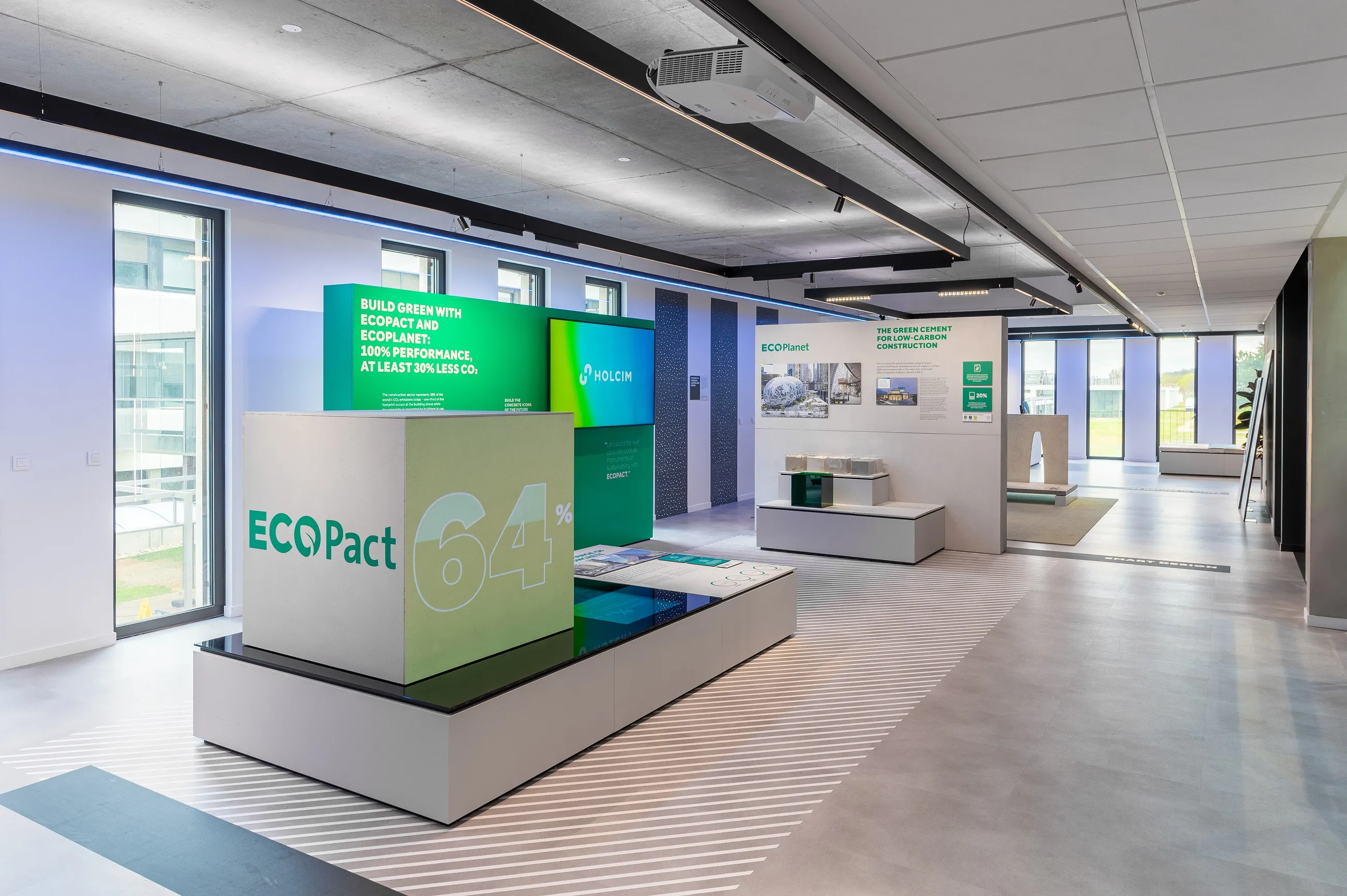
Press play for audio:
Transcript: Concrete is the most used material in the world after water, but the component that binds it together - cement - is responsible for around 7% global CO2 emissions.
Making cement requires heating the limestone and clay at a temperature of about 1500 °C to make clinker. During clinker formation limestone releases CO2. Burning the fuels to generate that much heat also generates the CO2. This clinker gets ground with gypsum to produce the cement.
That is why we are greening our operations at Holcim to reduce the clinker factor of the cement and replace it with reactive materials while ensuring 100% performance with at least 30% CO2 reduction.
The result is ECOPlanet low-carbon cement and ECOPact low-carbon concrete, multi-billion swiss francs brands leading the way in decarbonizing construction.
We’re playing with concrete’s recipe (also known as mix design) of - cement, water, sand, admixture and aggregates (crushed rocks) - to lower its CO2 footprint using alternative materials to replace the clinker partially. You can have a look at some of them in this exhibit.
4. Smart design
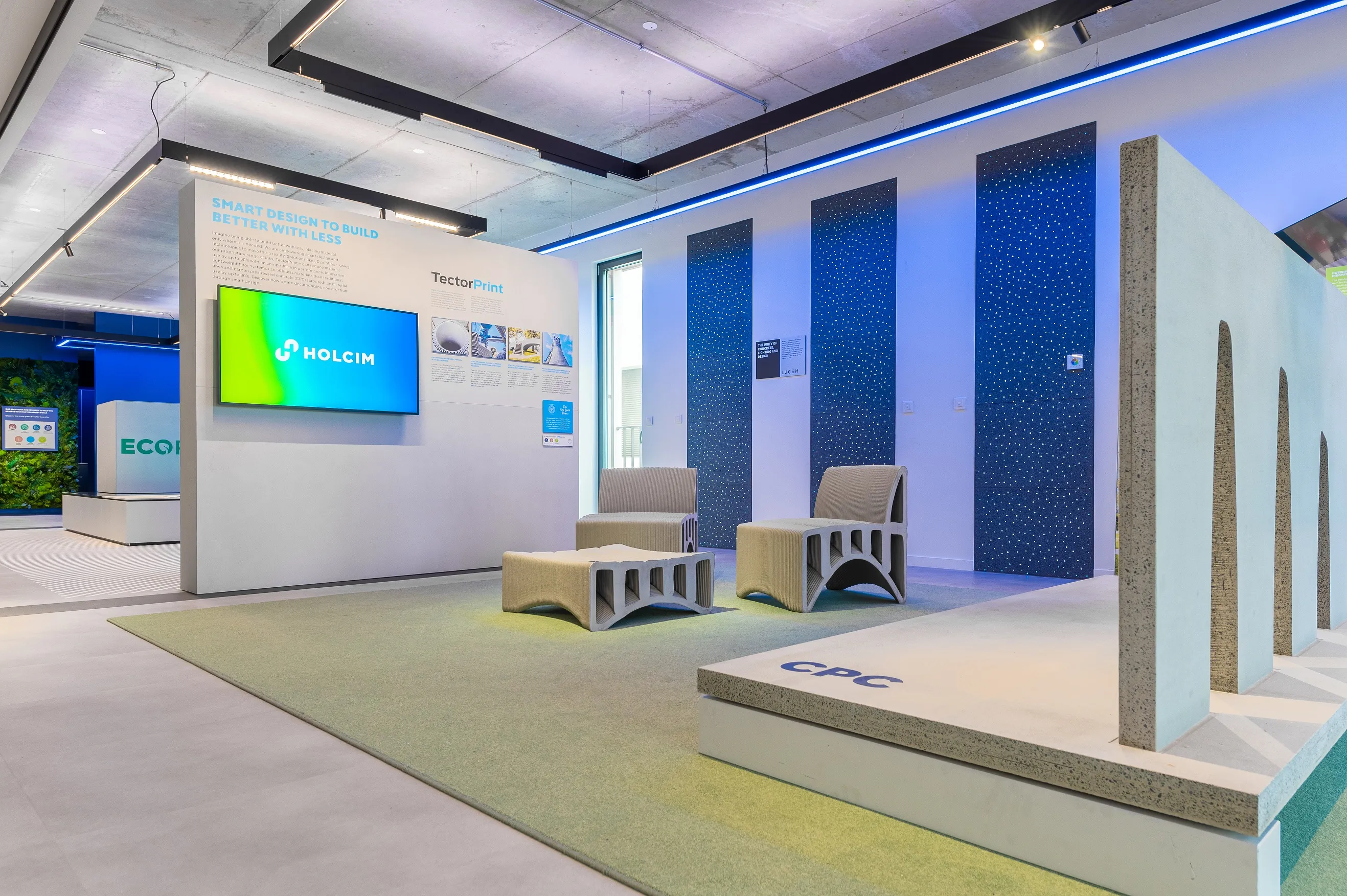
Press play for audio:
Transcript: To truly decarbonize construction, we also need to consider the design aspect to use a minimal amount of material for maximum strength.
In this section, you’ll see different solutions that allow us to reduce the quantity of material used, whether that’s by increasing its strength - as is the case with our DYNAMax and Ductal concretes, and the carbon fiber-reinforced CPC precast slabs - or by placing it only where it’s needed with the help of a 3D printer, using our TectorPrint range of concrete inks. You can actually see TectorPrint in action outside! We used it to build a 3D-printed concrete bridge named Phoenix, that stands solely through compression.
Enabling smart design is key to helping our customers build better with less.
5. More nature in cities
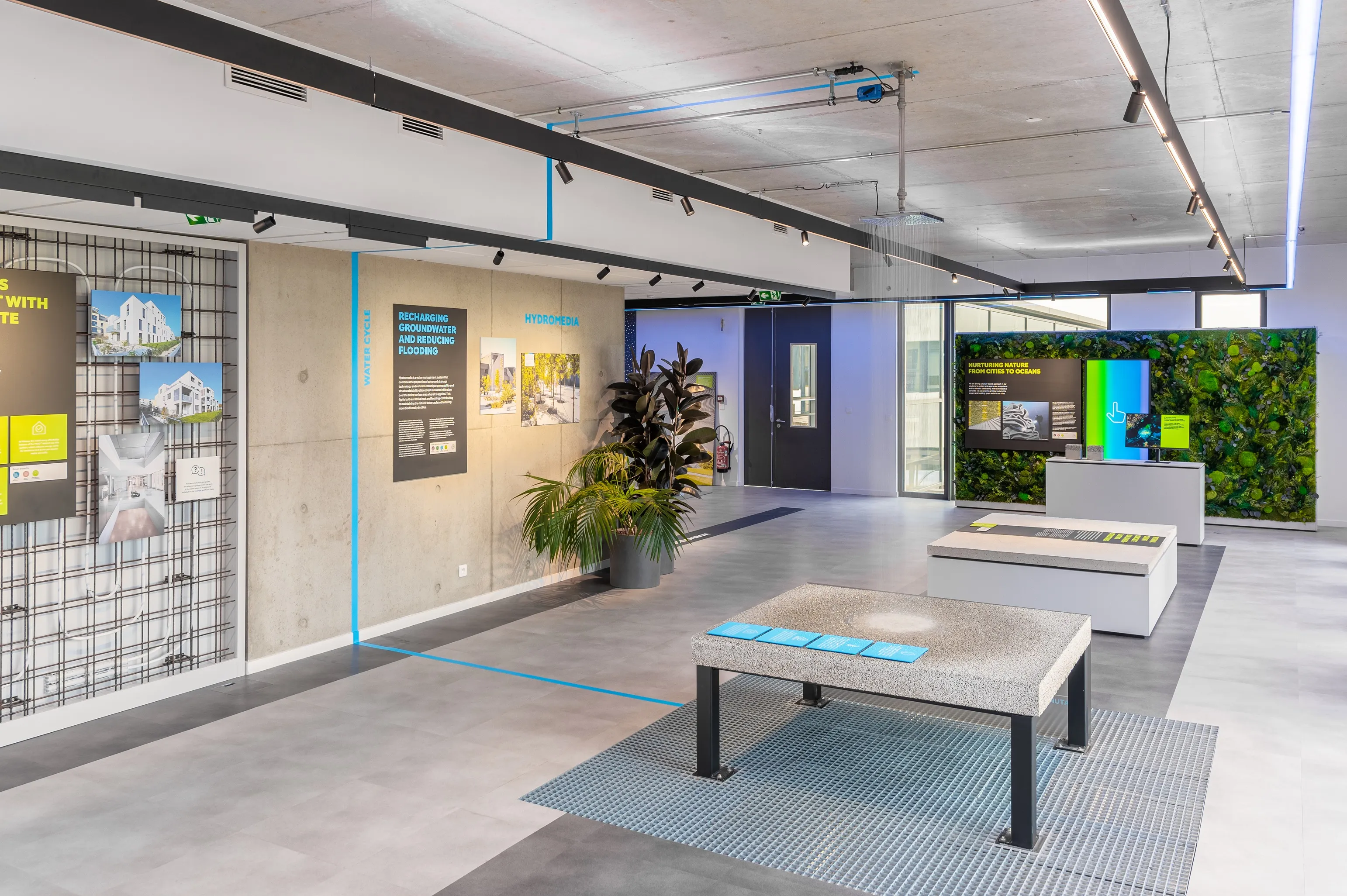
Press play for audio:
Transcript: A key element of our decarbonization journey is bringing more nature into the built environment.
In this section, you’ll see some examples of concretes that allow our customers to build with nature: bioactive concrete, for living wall and artificial reef applications; bio-based concrete, by incorporating wood chips or biomass as alternative raw materials to reduce the CO2 footprint and Hydromedia, a permeable concrete, which is a solution that manages rainwater to help prevent flooding and reduce the urban heat island effect. You can see Hydromedia in action by pressing the silver button located on the exhibit.
6. Energy efficiency and green retrofitting
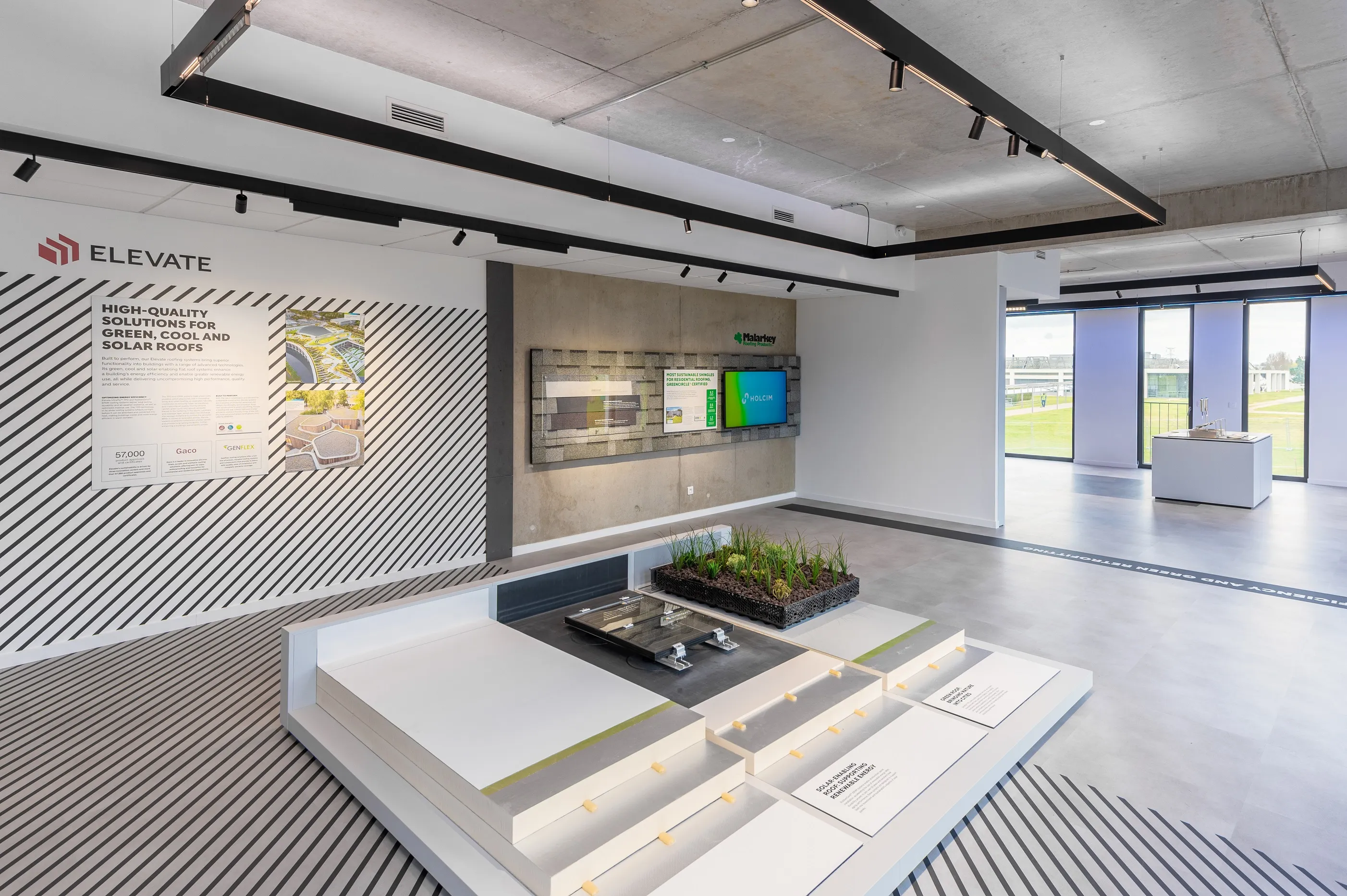
Press play for audio:
Transcript: Our commitment to decarbonizing building doesn’t stop at the construction phase: 70% of CO2 emissions from the built environment are generated by buildings in use. That means building operations - including heating, cooling and powering them - need to be decarbonized, too.
In this section, you’ll see Holcim’s solutions for driving energy efficiency, as well as for green retrofitting to keep existing buildings in use as long as possible. Our Elevate systems enable cool, solar and green roofs, and our Malarkey shingles provide durable and weather-resistant roofing solutions. Take a closer look at the display to see their composition that includes innovative smog-reducing granules.
On the other side, you’ll see specialty building solutions designed to extend the service life of our buildings including Tector mortars, PRB insulation systems and Compaktuna adhesives and coatings. And try picking up the cube of Airium cement-based insulating foam - compared to the cube of pure cement, you’ll notice it’s as light as air!
7. Circular construction
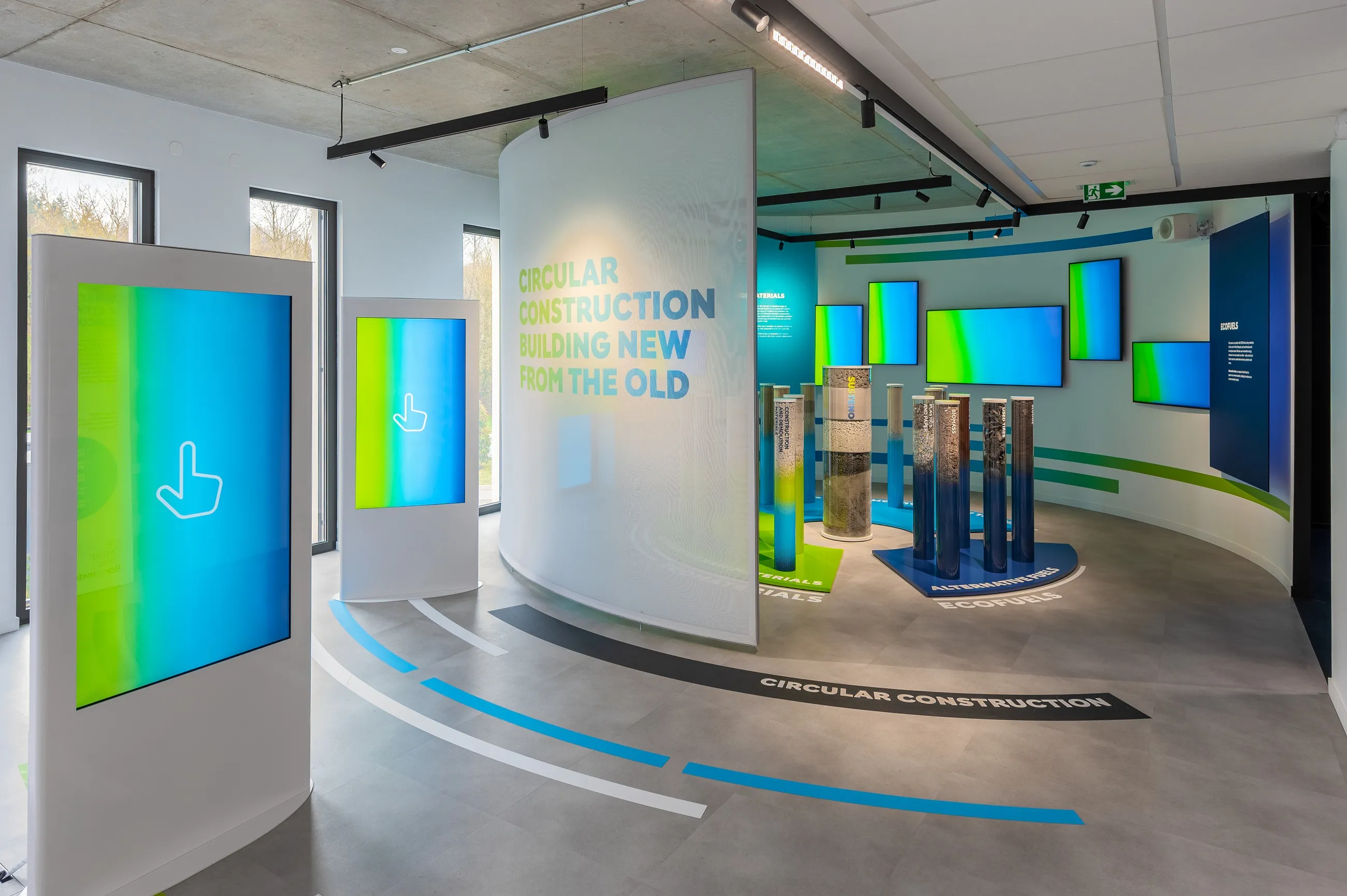
Press play for audio:
Transcript: At today’s rate of urbanization and population growth, we are set to consume 2.3 planets by 2040.
To stay within our planet’s boundaries, we need to shift gears: from a linear “take-make-waste” economy to a circular "reduce-reuse-recycle” one. And that means fundamentally changing the way we build.
At Holcim, we are deploying ECOCycle, our proprietary circular technology platform, to recycle construction demolition materials - like the ones you see in front of you - into new building solutions.
8. Next-generation technologies
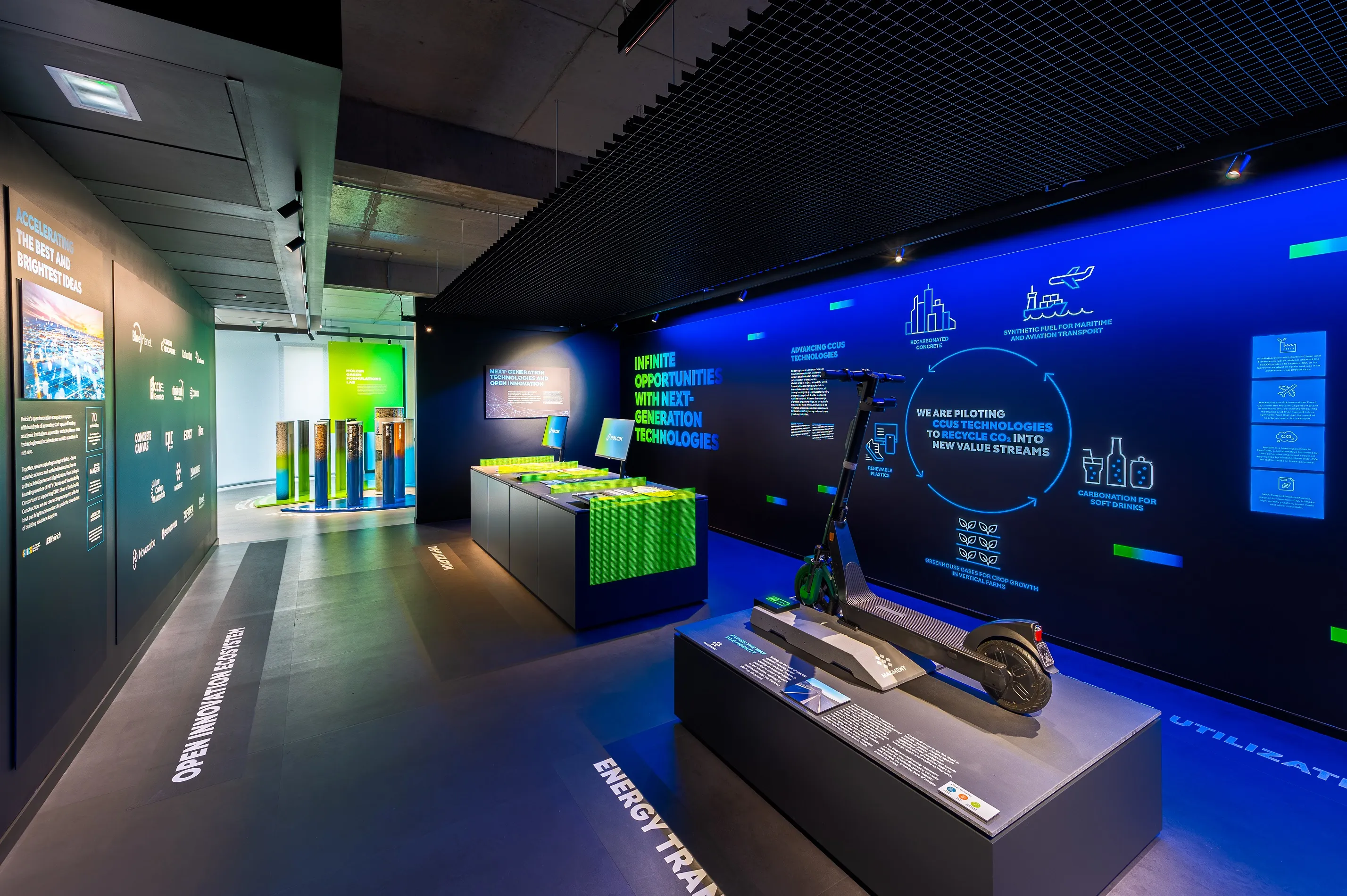
Press play for audio:
What does the future of the construction industry look like?
It means scaling up next-generation technologies: both by deploying them in our own operations at Holcim - as is the case with carbon capture, utilization and storage, or CCUS - and by partnering with startups who are developing disruptive solutions to transform the way we build.
Through Holcim MAQER Ventures, we are constantly growing our open innovation ecosystem.
9. Conclusion
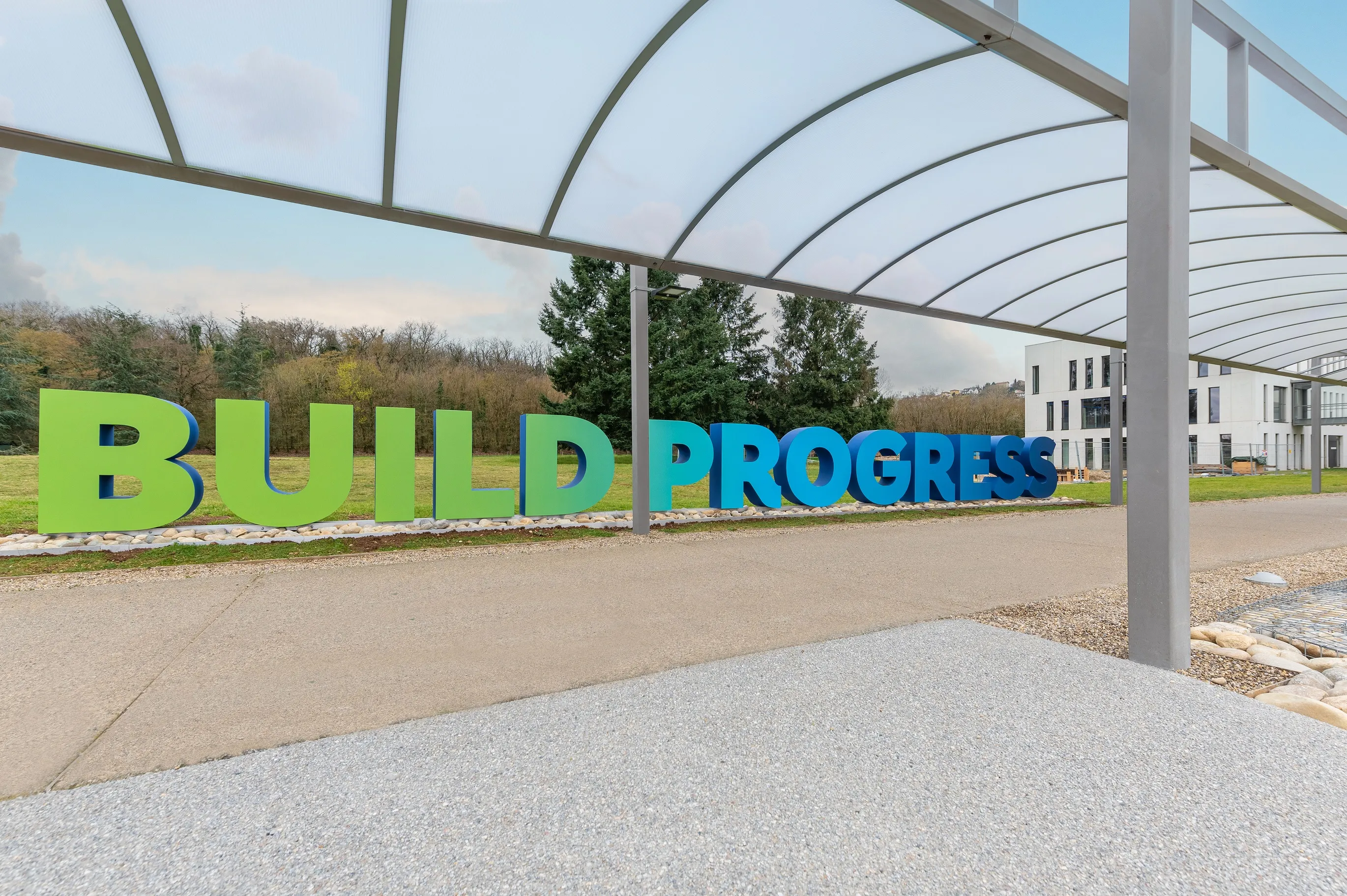
Press play for audio:
Transcript: As you’ve seen throughout your visit, the solutions to decarbonize the building sector already exist today.
But to make that a reality, we need everyone across the construction value chain on board: governments, investors, developers, architects and engineers all have a role to play in driving demand and accelerating sustainable building.
Together, we can build a net-zero future.





